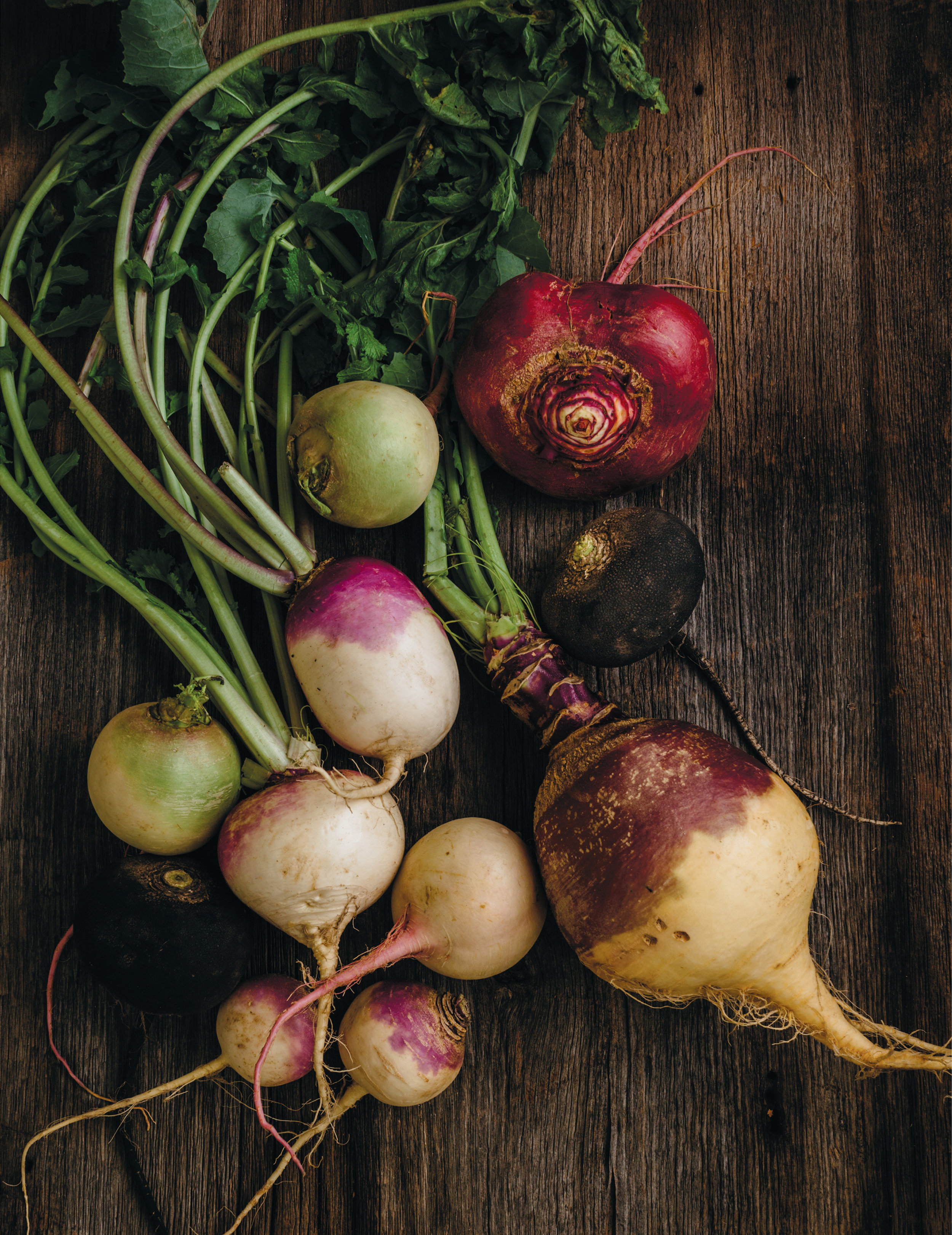What's In Season: Turnips, Radishes and Rutabaga
Photo by Michael Piazza / Styled by Catrine Kelty / Vegetables by Two Field Farm, Wayland
If you’re a dedicated visitor to local farmers markets and stands throughout our May–December growing season, you’ve seen—and eaten—plenty of radishes and turnips already this year.
You bought them in May, when they were the first things out of the ground, in their vibrant pinks and purples like little bundles of Easter eggs. You sliced pure white Japanese turnips into mixed greens, shredded them into quick pickles, served French Breakfast radishes with butter and flaky sea salt and dunked Cherry Belles into creamy, herby dips and spreads. These fresh “salad” varieties are a delight—juicy and sharp with a spicy bite just begging for a bath in garlicky vinaigrette or a swipe of runny raw-milk cheese. But come late autumn these young varieties give way to their stronger, spicier, heartier cousins with denser flesh and tougher skins, harvested in October for storage through the cold months. Spicy winter radishes, like Watermelon (with green-tinted skin and magenta flesh) and rough-skinned Black radishes are best served raw, while winter turnips transform from wickedly spicy to sweet and mellow when cooked. Purple Top turnips are easiest to find, but for a treat seek out some of the more interesting (and hard to find) heirloom varieties, like Vermont’s famed oblong Gilfeather and southeastern Massachusetts’ own creamy white Macomber, both turnip-rutabaga hybrids that make a delicate, supple soup when blended with broth and cream.
Speaking of rutabaga, it’s a hybrid itself: Also known as Swede, it’s a yellow-fleshed cross between turnip and cabbage, consumed widely by most Northern European cultures and especially in Britain. Equally adored and reviled, rutabaga plays a supporting role in many traditional dishes: In Scotland it’s served mashed with potatoes alongside haggis as “tatties and neeps”; in Ireland it’s stewed with lamb; and in England it’s preserved with fruits, spices and vinegar for Branston Pickle—essential with cheddar in a Ploughman’s Lunch. Scandinavians enjoy rutabaga mashed with butter and cream or shredded and fried into fritters, its bite mellowed by the richness of fat. And here in New England you’ll most often find a few chunks of rutabaga in New England Boiled Dinner—or mashed into potatoes, tucked into beef stew or added to savory pies.
As with all members of the cruciferous familia Brassicaceae, turnips, radishes and rutabaga are mustards, giving them their signature bite. And their reported health benefits are multifold, from fighting off cancer cells to boosting vitamin C levels and eliminating toxins from the body. Give these nutrient-packed roots some star power this winter!
This story appeared in the Winter 2018 issue.




